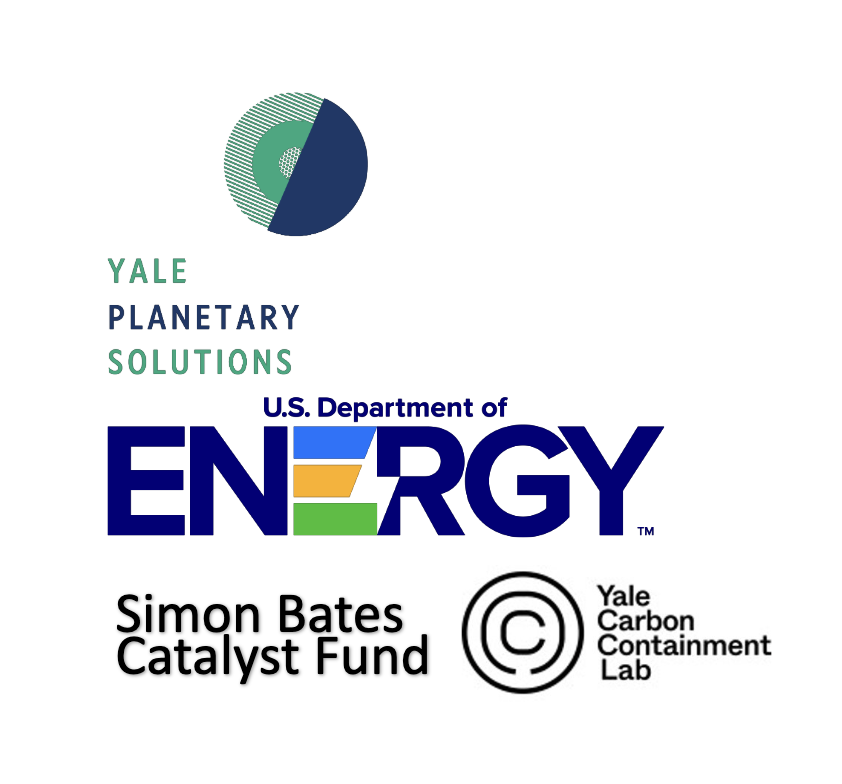Fundamental Charge Processes in Photocatalysis
Hu Lab Research Direction
Key Takeaway
Vision Statement

Our Work
We built a photocatalysis framework by showing the mutual dependence between energetics and surface kinetics.
We showed the importance of electron and hole accumulation at their respective sites. The energetic-kinetic relationship enables digital modeling.
Impact
In addition to building a comprehensive understanding of photocatalysis mechanisms, we unveils design principles for high-performance photocatalysts instead of reliance on trial and error.
We addressed timescale mismatch, one major challenge leading to typically low quantum efficiency.
Research Background
Initial Research Question
Photocatalysis is a highly promising approach for harvesting solar energy into chemical fuels and valuable products with high efficiency, selectivity, and cost-effectiveness.
However, progress in photocatalyst development remains constrained by the limited understanding of light-driven multi-step reactions, which encompass photon-induced carrier generation, charge separation and transport, surface carrier transfer, and mass diffusion. The processes involve multiple phases, interfaces, and scales.
The challenges to developing holistic understanding occurring across various spatial and temporal scales presents a barrier to the optimization of photocatalyst systems.
Our Research Approach
We have been working on building a framework that characterizes and help us understand photocatalysis by various approaches, including operando potential probing, solid/liquid interface characterization, modeling validation, and photocatalyst digital twin being updated continuously.
- Overview of Fundamental Processes of Photocatalysis Across Multiple Scales
- Development of Photocatalysis Framework
- Applications of Photocatalysis Framework to Photocatalyst Discovery
- Application of Photocatalysis Framework to Digital Twins for Informed Performance Optimization
Our Research Outcome
Overview of Fundamental Processes of Charge Separation, Charge Transfer, and Chemical Transport Across Multiple Scales
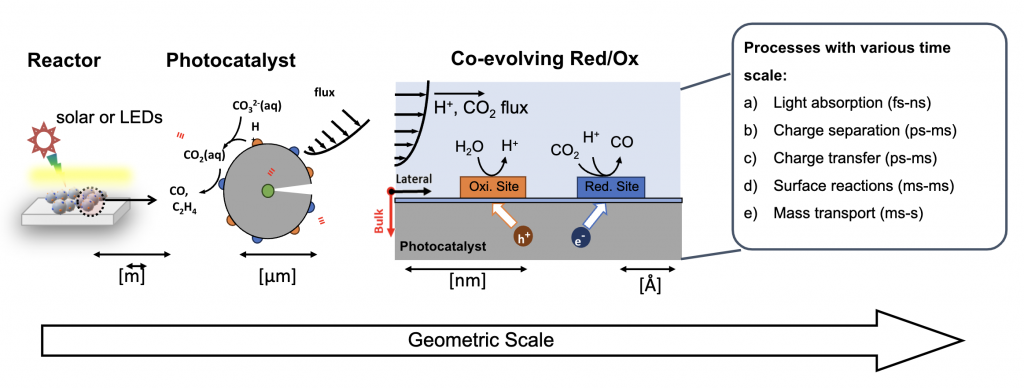
We develop high-performance photocatalytic systems by establishing a fundamental understanding of light-driven, multi-electron transfer catalysis processes at solid/liquid interfaces. These processes occur at the nanoscale and span multiple time scales — involving photon absorption, charge transport and separation, charge transfer, surface reactions, and mass transport — forming a nanoscale electrochemical cell hosting both reductive and oxidative half-reactions.
Development of Photocatalysis Framework
To address the lack of design principles for high quantum efficiency (QE) photocatalysis, our lab pioneered the concept of “charge accumulation” at the semiconductor reactive sites, driven by quasi-Fermi level gradients. These gradients arise from a combination of asymmetric energetics and asymmetric kinetics, which together act as the driving force for charge separation (ACS Energy Letter 2022). We further revealed that these energetics and kinetics are mutually dependent when driving the charge separation in photocatalysis: the local electron potential directly influences the surface kinetics at sites that mediate multiple redox events. This dependency was quantified through catalytic kinetics and subsequently experimentally validated on SrTiO3 photocatalytic surface using in situ potential-probing methods. In these studies, we demonstrated that porous CrOx layers modify the kinetics on the cathodic sites such as Rh, Pt and Ag cocatalysts (Energy and Environmental Sciences, 2020).
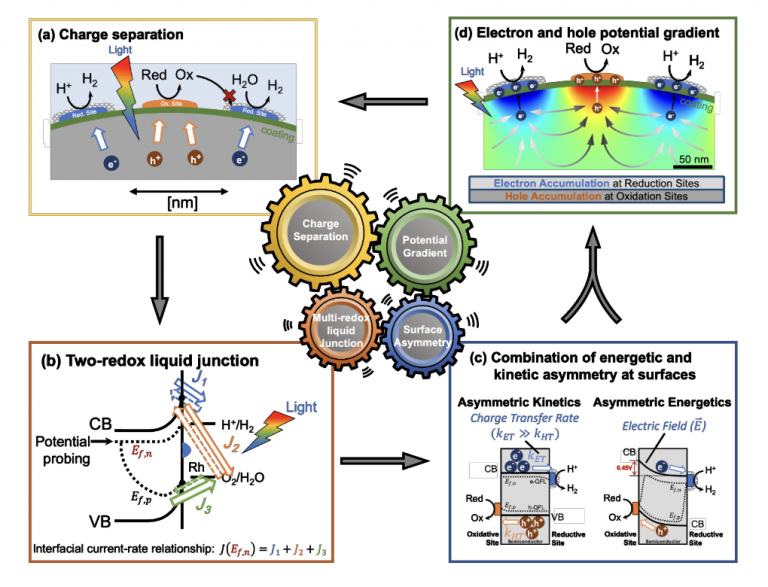
Applications of Photocatalysis Framework to Photocatalyst Discovery
Building on this fundamental understanding, we discovered a completely new design space to achieve efficient charge separation within nanometer-scale distance between reduction and oxidation sites. We combined electron-transfer theory, electrochemical and spectroscopic approaches, and digital modeling. Because the reduction-oxidation site distance is only 20-200 nanometers, we can operate at a “short channel” regime to achieve high efficiency photocatalysis. For example, just a 0.45-eV difference in barrier heights can achieve near unity charge separation quantum efficiency.
We also derived the potential-rate relationship when semiconductors interface with the O2/H2O and H+/H2 redox couples, a condition unique to photocatalysis, and we further developed operando potentiometry to validate this relationship quantitatively. In addition, our design enables scalable manufacturing of photocatalysts, i.e., by simply loading nanoparticle co-catalysts on coating-protected semiconductor particles. (PNAS 2021)
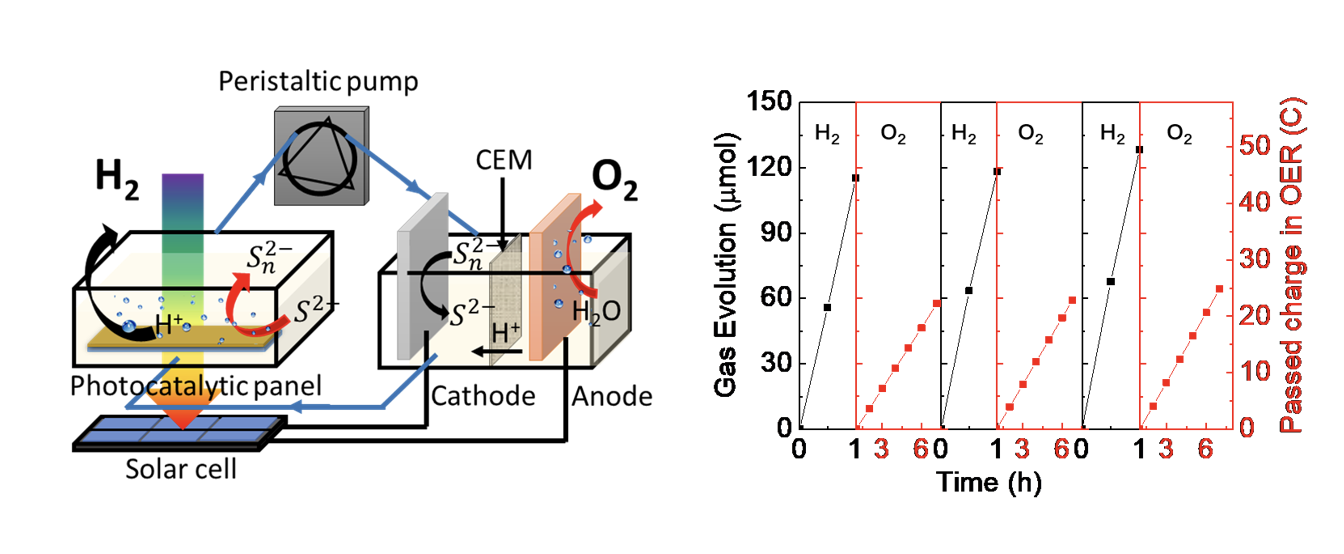
Application of Photocatalysis Framework to Digital Twins for Informed Performance Optimization
We are now extending this framework to elucidate more complicated mechanisms, including hole energetics, surface hole transfer rate, and carrier dynamics in the semiconductor. In particular, we wonder:
– What should the nanoparticle work function be?
– What should the red-ox site distance be?
– What governs the size of semiconductor particles?
To refine our understanding and expedite further design, we are incorporating advanced front/back probing techniques used in conjunction with digital twin simulations. This enables real-time monitoring and AI-assisted interpretation and optimization. With this integrated approach, we have the potential to accelerate development of photocatalysts with unprecedented quantum efficiency and performance.
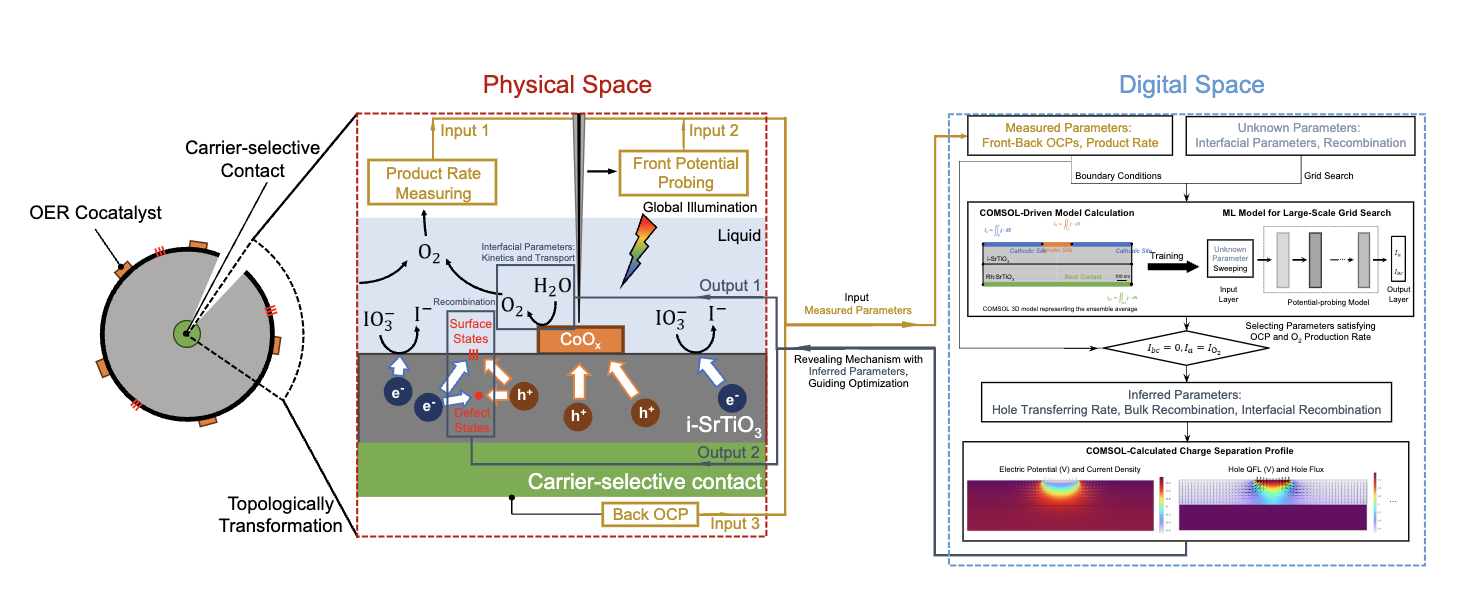
Conclusion
We established a photocatalysis framework to holistically understand the kinetics and energetics during photocatalyst operation.
This framework provide a systematic method to evaluate the performance of photocatalysts. Additionally, we will aim to leverage real time monitoring and AI-assisted photocatalyst optimization to further enhance rates or tune selectivity.
Our future directions involve developing digital twin for photocatalysis to fundamentally understand the hole transport and transfer processes.
Acknowledgements & References
Papers:
Z. Pan, Y. Rito, Q. Wang, X. Shen, Q. Zhu, Y. Xue, J. A. Rohr, T. Hisatomi, K. Domen, S. Hu, “Mutually-dependent kinetics and energetics of photocatalyst/ co-catalyst/two-redox liquid junctions”, Energy & Environmental Science, 13, 162–173 (2020).
T. Zhao, R. Yanagi, Y. Xu, Y. He, Y. Song, M. Yang, and S. Hu, “A Coating Strategy to Achieve Effective Local Charge Separation for Photocatalytic Coevolution”, Proceedings of National Academy of Sciences, 16, 119(7) e2023552118 (2021).
R.Yanagi, T.Zhao, D.Solanki, Z.Pan, and S.Hu, “Charge Separation in Photocatalysts:Mechanisms, Physical Parameters,and Design Principles”, ACS Energy Letters, 7, 432–452(2022)
T. Liu, Z. Pan, K. Kato, J.-J. M. Vequizo, R. Yanagi, X. Zheng, W. Yu, A. Yamakata, B. Chen, S. Hu, K. Katayama, and C. Chu, “A General Interfacial-Energetics-Tuning Strategy for Enhanced Artificial Photosynthesis”, Nature Communications, 13, 7783 (2023).
Funding:
